Iasa Topic of the month: Business Architecture 2.0
Each month Iasa will cover a new trending topic via eSummits (virtual conferences), interviews, articles and guest blog appearances.
Businee Architecture is defined as “a blueprint of the enterprise that provides a common understanding of the organization and is used to align strategic objectives and tactical demands.” People who develop and maintain business architecture are known as business architects.
Below are the eSummit presentations and blog posts released this month. This will help put you on the path to become an Business Architecture master.
————————————————————————————————————————————————————————————————
May Topic: Organizing Architectures for Business technology Strategy
May’s topic will discuss Organizing Architectures for Business technology Strategy and will be held on May 18th. With industry expert presenters, you don’t want to miss it! Register for free at our eSummit page!
————————————————————————————————————————————————————————————————
Business Architecture 2.0 eSummit Presentations
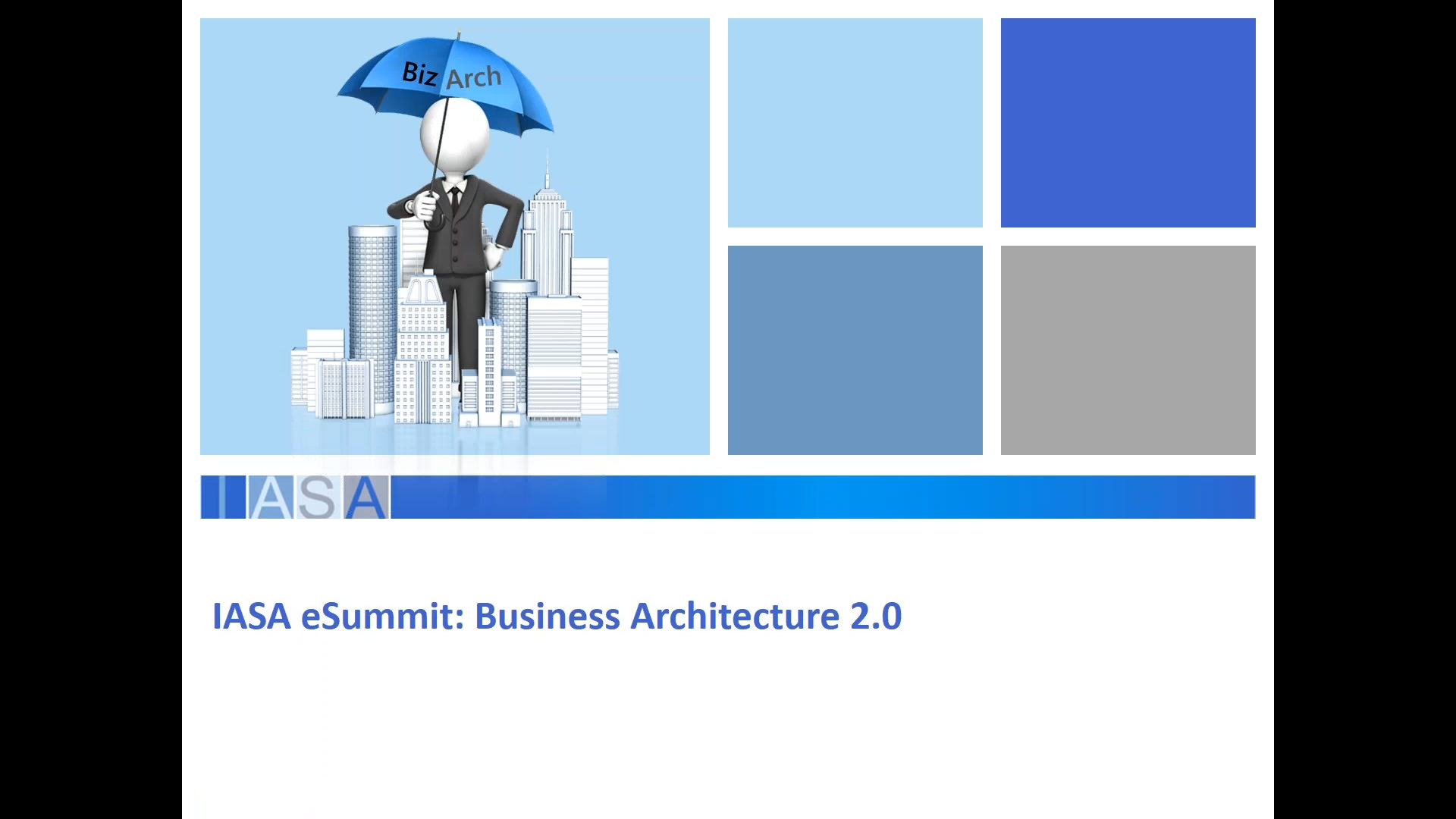
Basis elements of theory and practice of Architecture of Business (AoB)
by Michael Poulin
The presentation addresses basis elements of theory and practice of Architecture of Business (AoB) based on the Theory of Systems/System Thinking. Any system of a business organisation has its architecture regardless the awareness or opinions of the organisation’s managers. In a successful organisation, the Executives intuitively follow this system’s architecture with or without dedicated role of Business Architect. The speaker will observe four fundamental aspects of AoB: Intrinsic Business Architecture, Practice of Business Architects, Architectural Governing and Management, and Architecture Implementation scheme.
The audience will learn about:
a) Architectural specifics of the dynamics of the context in which a business organisation operates and has to operate in the future
b) A meaning of “can do” business capability, its model and consequences for the planning and organising the work of business organisation
c) 10 Principles of Architecture of Business
d) Distinction between an architecture and its implementation
e) Why orientation on service is the primary and essential quality of every commercial or non-profit organisation
f) 22 Business Scenarios/cases that the Business Architects usually have to deal with in their daily practice
g) Emerging requirements for qualification of a Business Architect role.
Watch Now
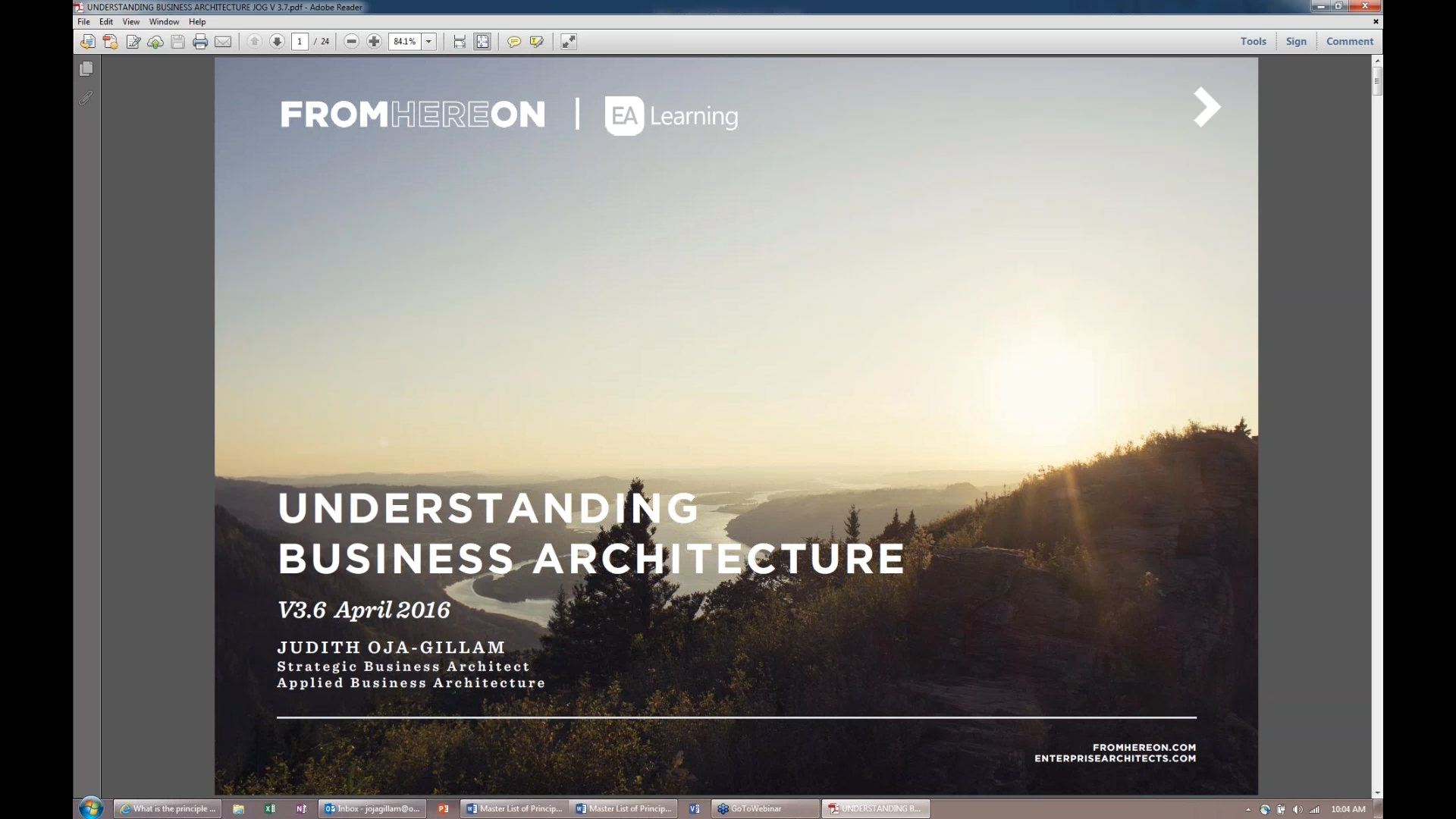
Understanding Business Architecture
by Judith Oja Gillam
At Enterprise Architects, and From Here On, our belief is Business Architecture is the design of business. Failure points between strategy and implementation are many. So we begin with an understanding of market facing business problems, and drivers, to establish consensus for strategy, define a common reference point, take a coherent approach and build strategically aligned roadmaps to solve for the business problem. In this regard we give strategic business objectives, and goals, greater clarity to operationalize and avoid the risky leap from strategy to specific project investments. The E2E methodology produces business capability and performance based roadmaps off the back of the business architecture. In effect, taking most of the guess work out of the question “What are we going to do this year?”
Watch Now
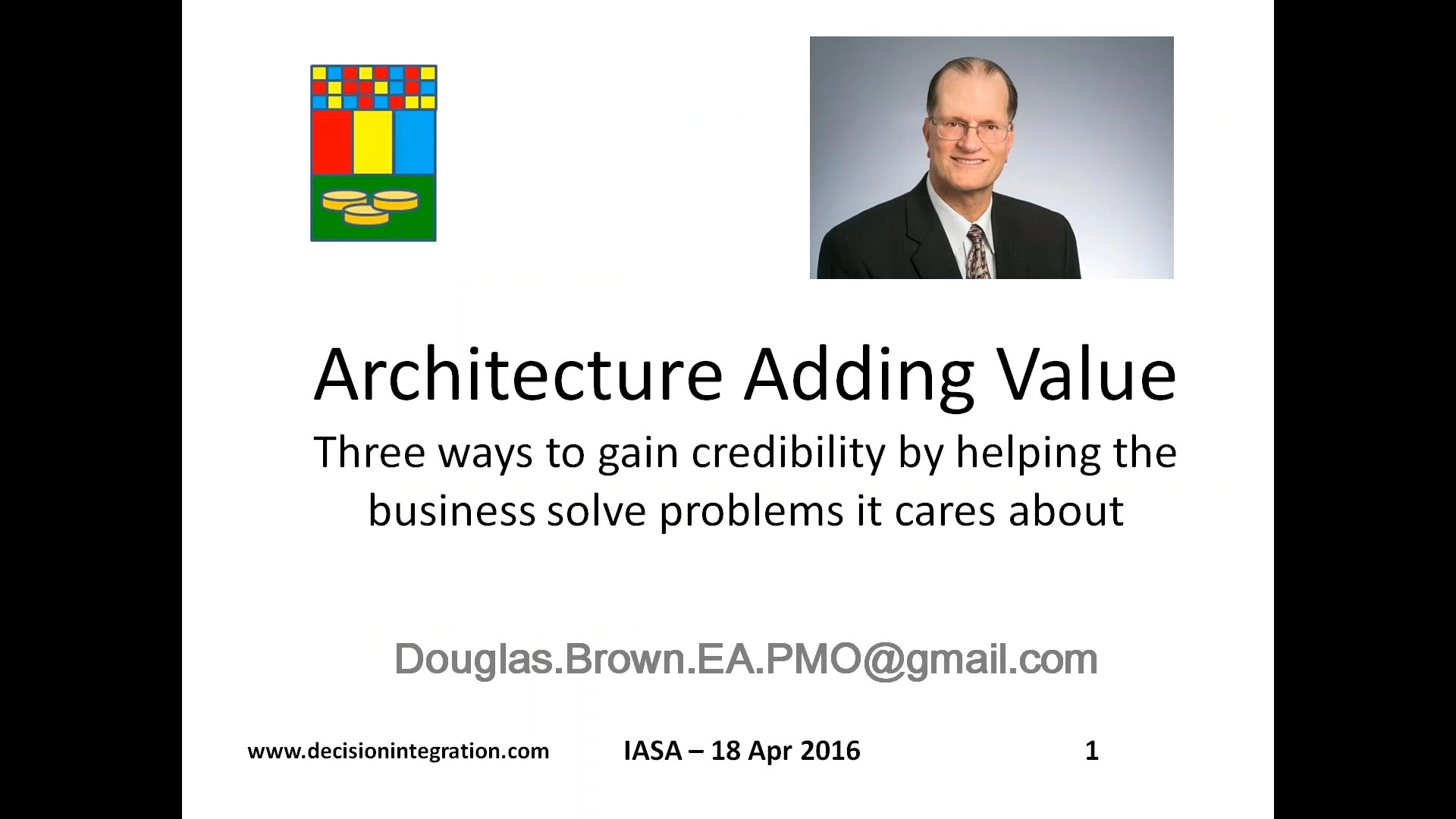
Architecture Adding Value: Three ways to gain credibility by helping the business solve problems it cares about
by Douglas Brown
Surveys show that most mid- to large-size business are on their 2nd and 3rd try at enterprise architecture (EA), and still aren’t making much progress. All too often, executives see highly paid people drawing pictures that nobody looks at. What EA need to do is help the business draw some conclusions and to see the big picture. In this session, Dr. Douglas Brown will explain how to select an architectural framework and three ways of using the business layer of the architecture to solve actual business problems. Once that happens, EA has more freedom to explore the deeper layers of the architecture and more complex inter-relationships, delivering even greater benefits to a more receptive audience.
Watch Now
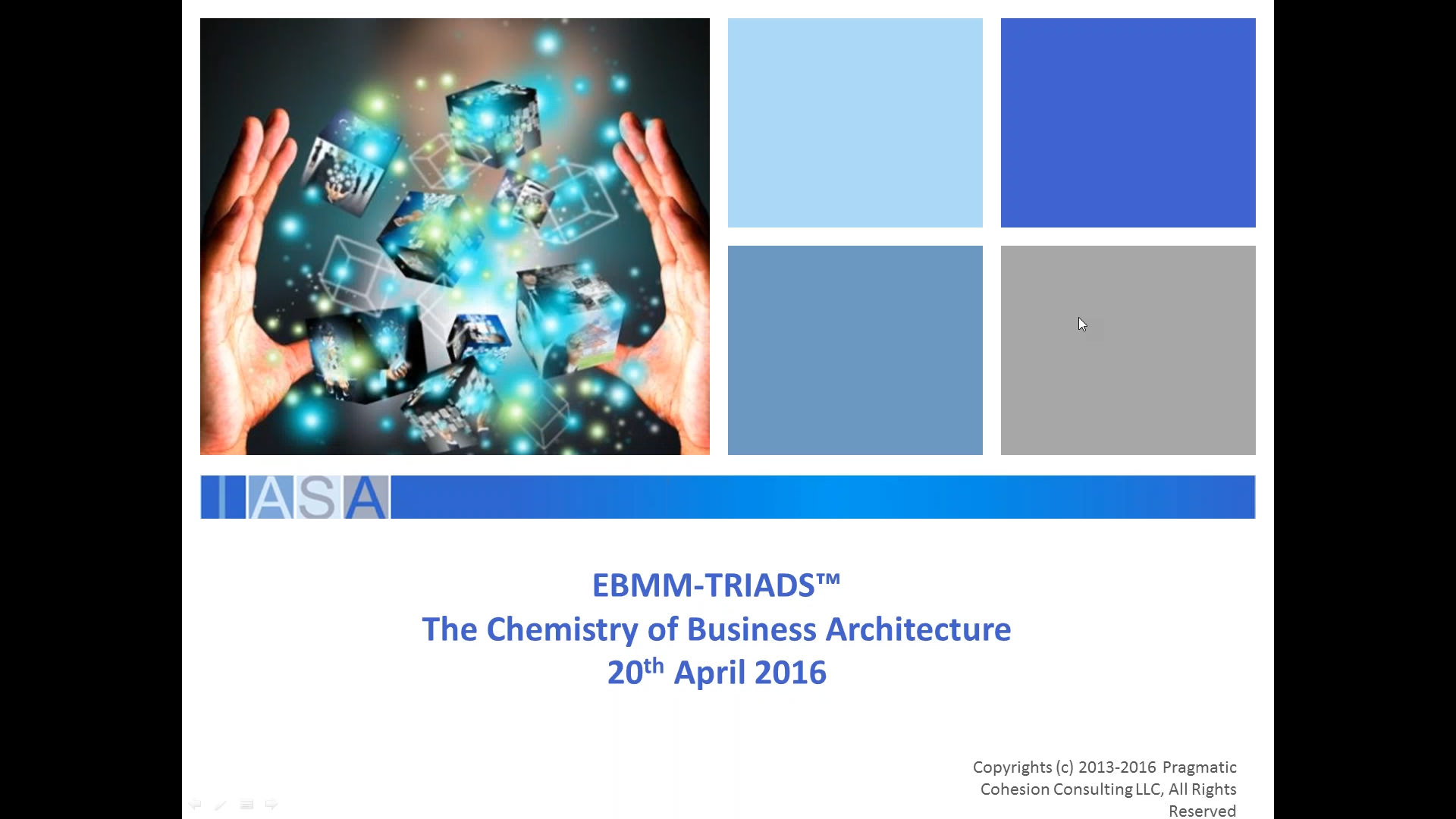
TRIADS – The Chemistry of Business Architecture
by Atiogbe Didier Koffi
This presentation tackles the number one issue faced by most organizations:the Alignment of Business and IT. We present a Business Architecture meta-model called the EBMM TRIADS™ and its application to aligning an organization’s Business Motivation, Business Strategy, Business Responsibilities, and Business Operation. The TRIADS can provide a solid reference for a qualitative and quantitative characterization of the Alignment achieved by an organization through its existing and targeted Business Architectures.
Watch Now
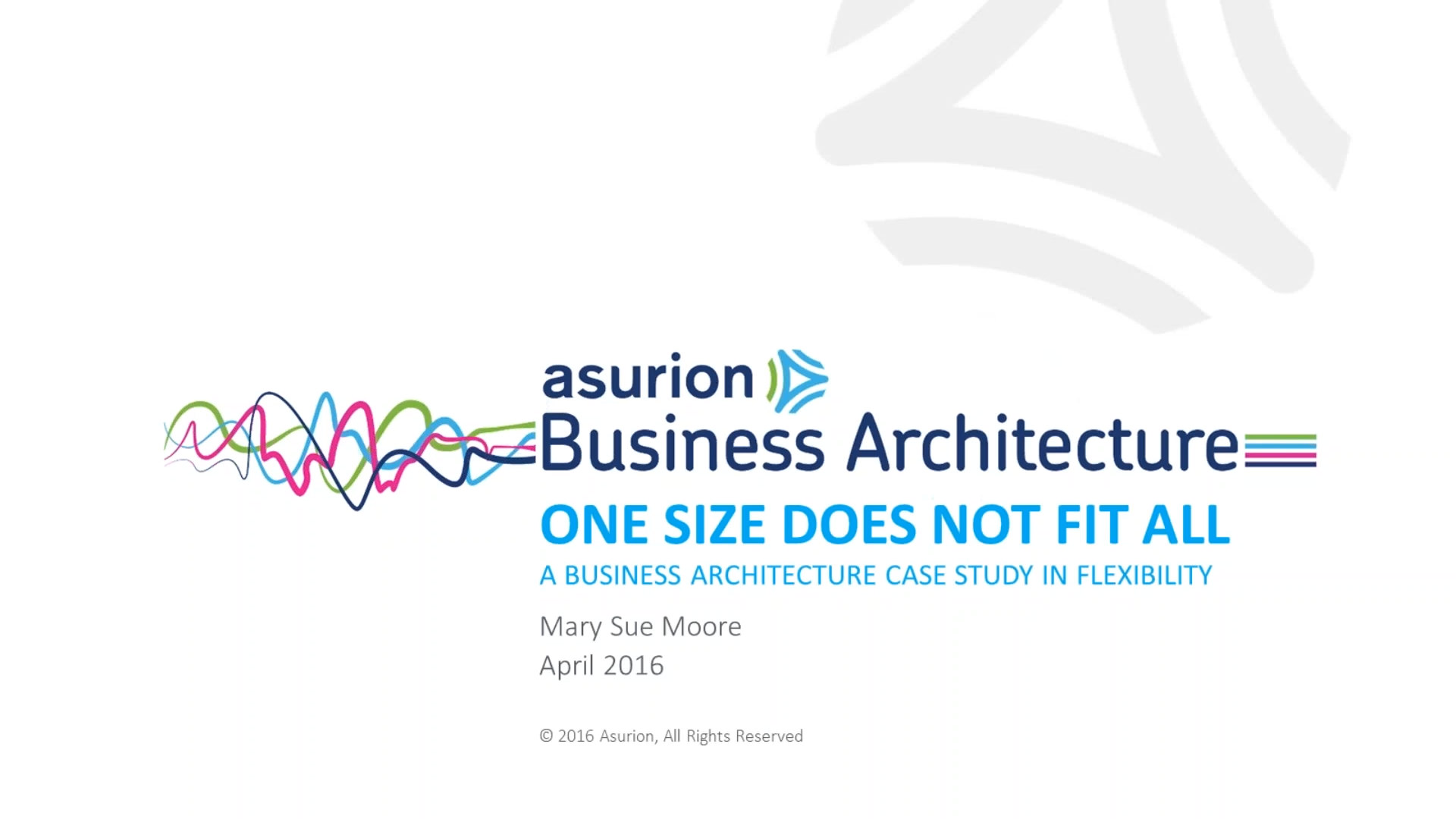
One Size Does Not Fit All, a Business Case Study in Flexibility
by Mary Sue Moore
There are sixty-seven different ways to ‘do’ Business Architecture: 3 really bad ways, 3 pretty good ways, and sixty run-of-the-mill ways. The last way is appropriate for your consumer. While having the best, most complete Business Architecture practices and data is an end goal, being flexible enough to provide value to your consumer today is key to your continued success. This presentation describes some challenges and some successes we have with different dimensions of EBA and how we’ve adapted along this journey at Asurion.
Watch Now
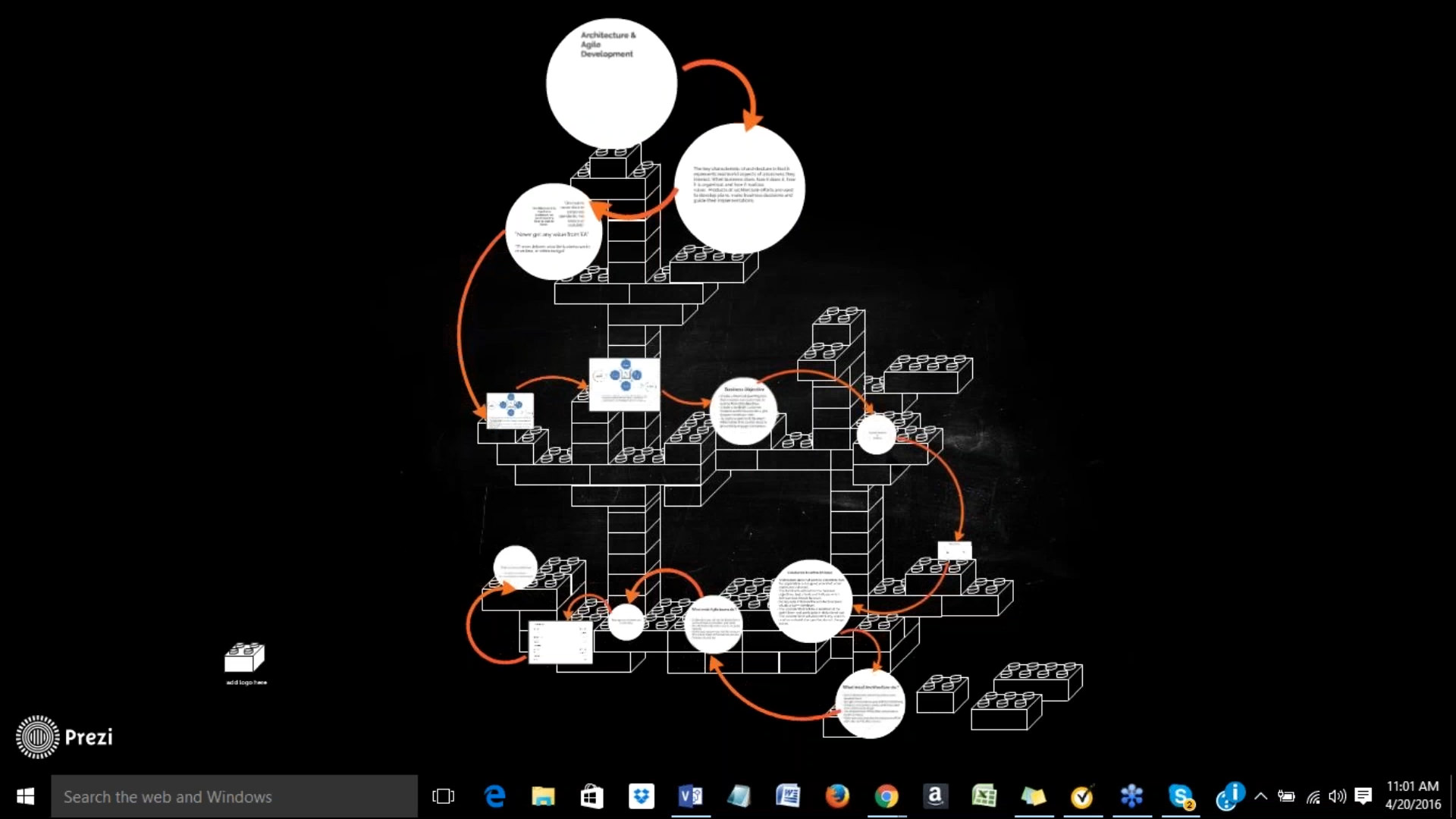
Business Architecture and Agile – how to ensure alignment and value realization
by Dave Shepardson
Companies need to drive value to stakeholders at an increasing pace. Agile provides the necessary framework for rapid execution and the delivery of incremental value. Business Architecture is perceived as a impediment to the process and not providing value to the execution teams.
Based on experience, Dave will present a Business Architecture and Agile approach which has proven to work.
Watch Now
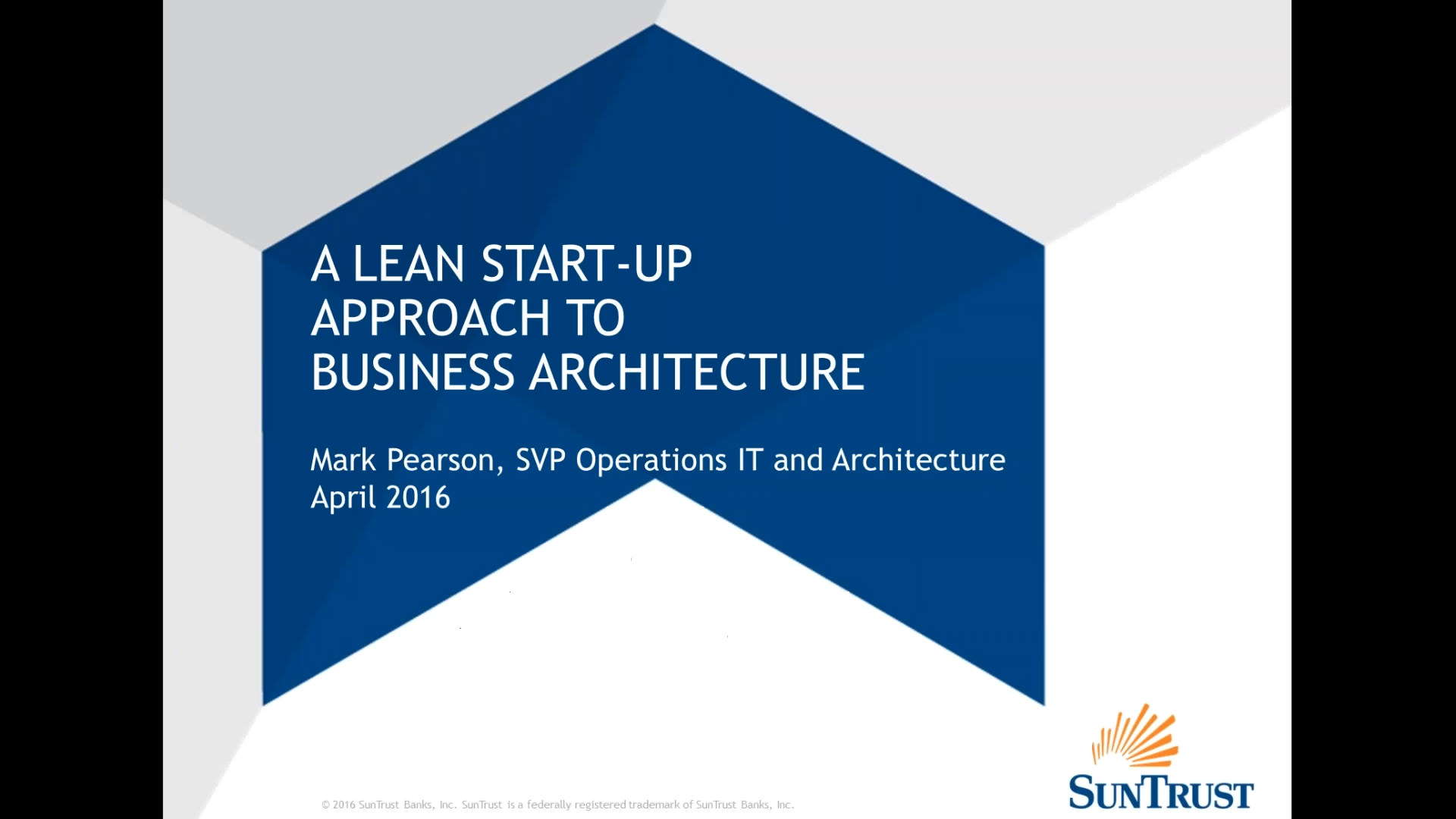
A Lean Start-up Approach to Business Architecture
by Mark pearson
Starting or reviving a business architecture practice within a large company implies a unique set of challenges for architecture leadership. In this talk, we discuss a lean start-up approach for the practice of business architecture that identifies business gap areas that if focused on, will lead to the most rapid demonstration of business value. Throughout, we use examples gleaned from a large financial institution, and describe how this approach is relevant for most medium and large business organizations.
Watch Now
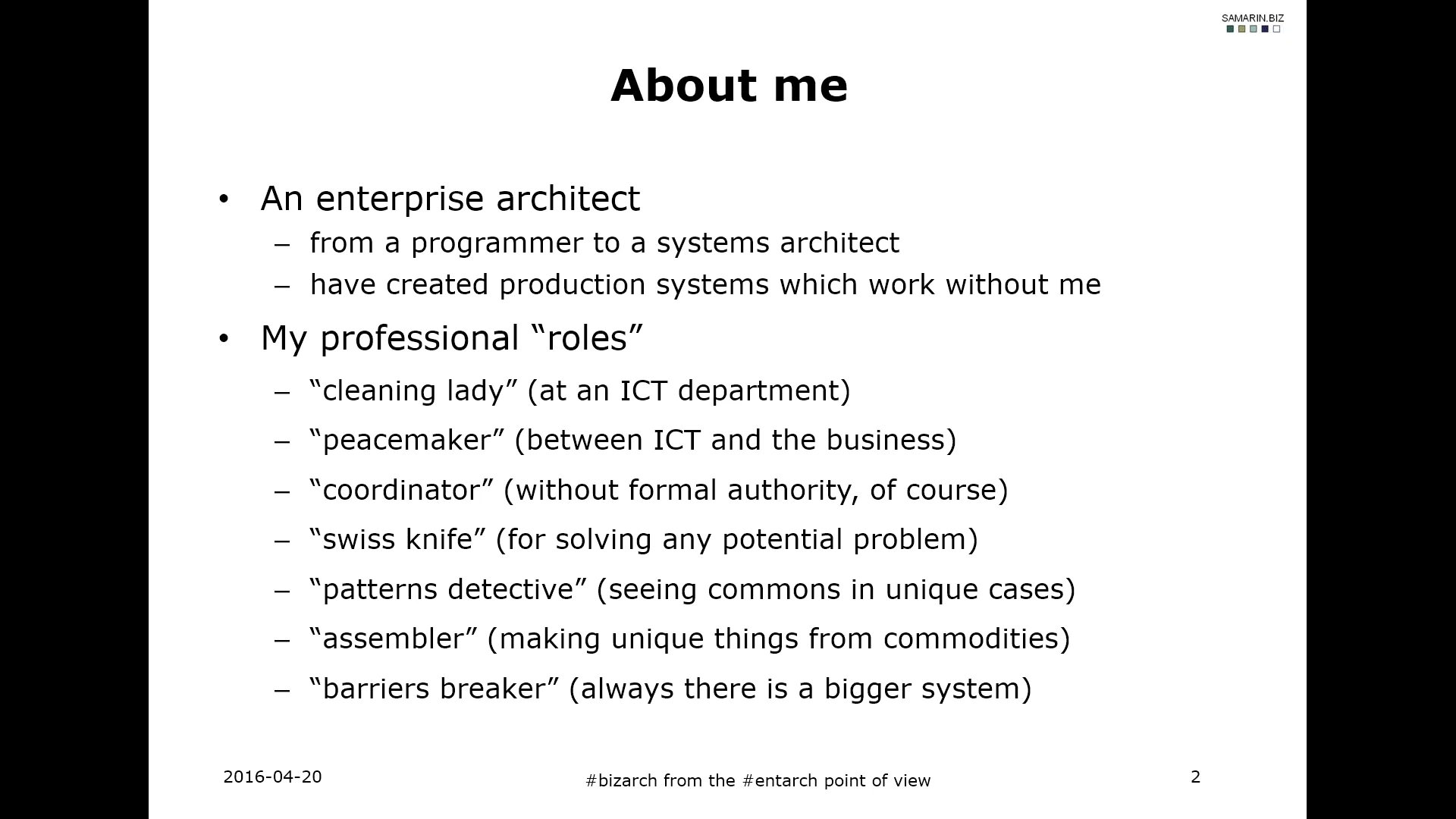
Business architecture from the enterprise architecture point of view
by Alexander Samarin
In the modern world of digital transformation and innovation, the speed of change is permanently increasing. Therefore the focus of enterprise architecture needs to shift from the description of individual independent artifacts to the management of their life cycles, and beyond to the management of the evolution of all artifacts as a whole.
This presentation will discuss how several modern techniques, such as architecture viewpoints, patterns, and machine-executable models, can be combined to improve a business architecture’s ability to manage business artifacts and thus to improve an enterprise’s ability to adapt to new business models and business challenges.
Watch Now

Planning and Managing Business Architecture for Sustainable Advantage
by Dinesh Kumar
In pursuit of modeling the business architecture and transforming the business, most organizations are constrained by-design. Following the crowd and chasing shiny objects are temporary pain relievers. For a sustainable advantage in the age of digital business, we need to think differently and do things differently.
How can an organization anticipate trends and plan the future. How can we know what we don’t know? How do you enable organizational learning? How do you ensure business and IT alignment?
Describing business architecture in terms of people, process, information and technologies is necessary, but not sufficient. It is a set of capabilities that makes one organization different from others. It would make sense to start with the capability architecture. You might have used maturity models for assessment and benchmarking. In this session, you will learn how capability maturity models, I call them capability maps, can be effective in articulating current and next state of business architecture, understanding and addressing dependencies, managing change, communicating value, developing roadmaps and monitoring progress.
Watch Now
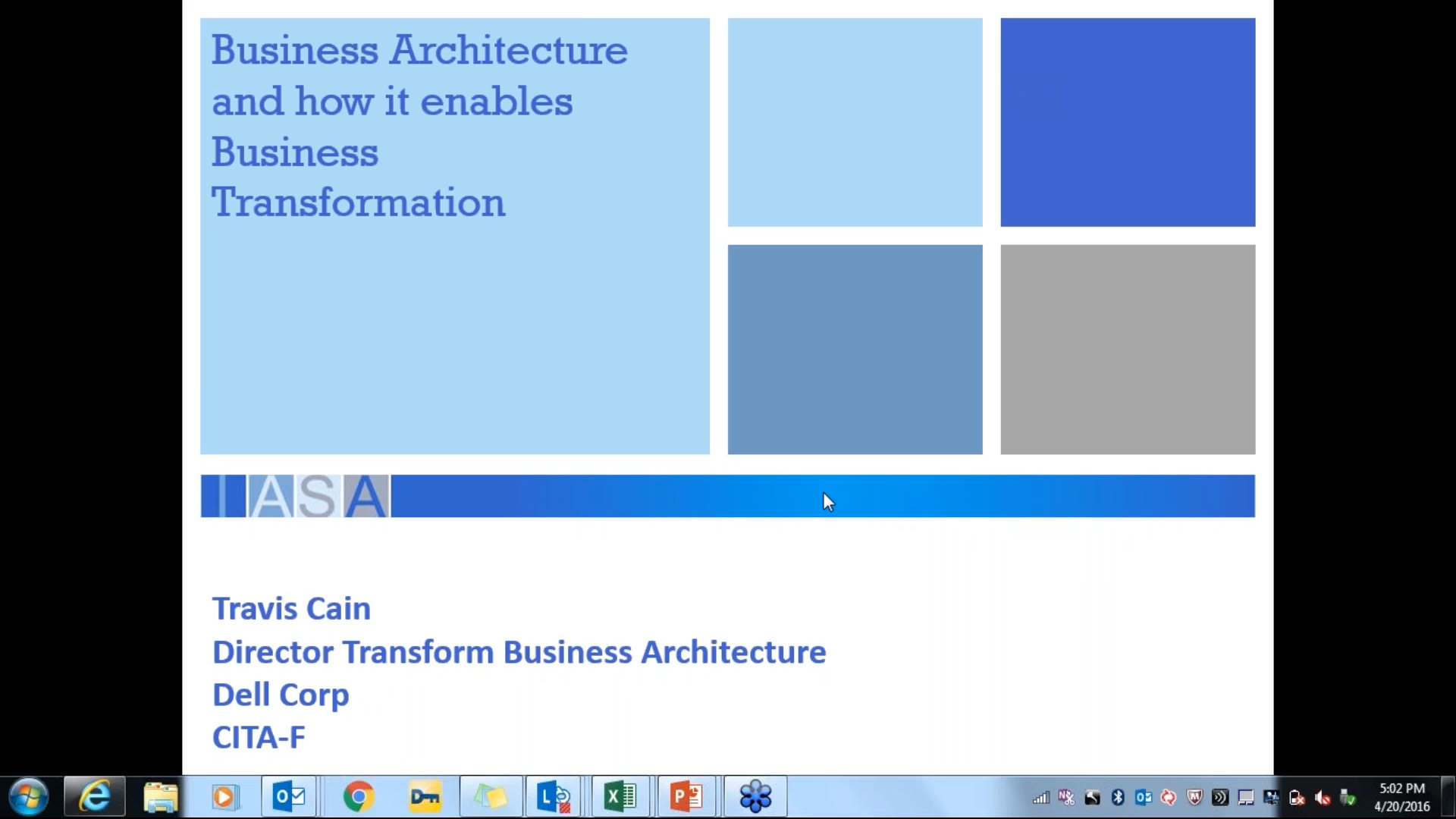
Business Architecture and How it Enables Business Transformation
by Travis Cain
“Since the mid-2000s, organizational change management and transformation have become permanent features of the business landscape.”
I’ll explain how Business Architecture can accelerate and enable your Business Transformation.
Key Takeaways from the talk:
- How to recognize the need for Business Architecture in your organization
- How to organize your Business Transformation strategies to drive your IT roadmap (framework and key attributes)
Watch Now
————————————————————————————————————————————————————————————————————————————–
Interviews
Starting Business Architecture in your Organization with Amy Crockett
Business Architecture Today with Coen de Bruijn
Talking Business Architecture with Siddesh Mahadik
Terry Lowe Discusses Business Architecture
Business Architecture and your Organization with Kishore Maranganti







